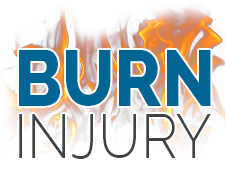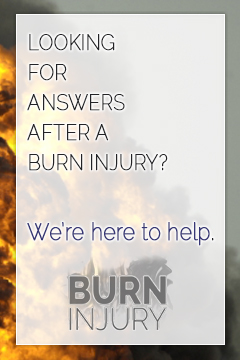Burn Classification
Burns are classified by severity and penetration through the layers of skin. Burns are considered to be first, second, third, or fourth degree burns depending on the severity. While first degree burns are not typically dangerous, a patient that has received second, third, or fourth degree burns should seek immediate medical attention. Different burns may require different forms of treatment.
Burn Classification Symptoms
Knowing the symptoms of the different degrees of burns can be helpful when it comes to deciding how best to treat the burn. Delivering some form of treatment immediately can help prevent scarring, deformities, and pain. However, treatment that may be helpful for a first degree burn can be harmful for a third degree burn.
First Degree Burn
A first degree burn is sometimes called a superficial burn. The outer layer of skin, or epidermis, is the only skin that is affected by a first degree burn. The skin is red and painful, and the area may swell slightly, but blisters will not be visible.
Second Degree Burn
A second degree burn is sometimes called a partial thickness burn. This type of burn involves the dermis, the second layer of skin. The burn will be red and painful, as with a first degree burn, but the skin will often start to blister as well. This can take time or it can begin immediately after receiving the burn.
Third Degree Burn
A third degree burn is also called a full thickness burn. Third degree burns go through the dermis and epidermis to the adipose tissue, or fat, below. Third degree burns can destroy nerves, so the area may be numb. The appearance and feel of the skin may be altered, and may appear white or tan and will be leathery or tough in some cases.
Forth Degree Burn
A forth degree burn is the most severe type of burn. This type of burn goes through the skin and tissue and affects muscles and bones. Skin may be blackened or completely burned away. There is often nerve damage with a fourth degree burn, so the patient may feel no pain.
Treatment Based on Burn Classification
Determining the classification of some burns may be difficult, especially if the burn is large, as different areas of the burn may differ in severity. In this situation, the burn should be treated according to the highest degree of burn that is visible. Medical treatment should be sent for if the burn appears to be second degree or higher.
If the patient is in danger of shock, steps should be taken to prevent injury, such as laying the patient down in a way that will not risk injury to burned areas. Bandaging the burn may help to prevent infection, but care should be taken to avoid damaging or tearing burned skin. Applying ointments, ice, or blowing on severe burns may tear skin, so these types of treatment should be avoided.
Sources:
“Burns.” Medline Plus. U.S. National Library of Medicine, 13 Jan 2010. Web. 18 Dec 2013. <http://www.nlm.nih.gov/medlineplus/ency/article/000030.htm>.
“Burns Safety: The Reality.” Centers for Disease Control and Prevention. USA.gov, 12 Apr 2012. Web. 18 Dec 2013. <http://www.cdc.gov/safechild/burns/>.
“Classification and Treatment of Burns.” Lucile Packard Children’s Hospital at Sanford. Lucile Packard Children’s Hospital, n.d. Web. 18 Dec 2013. <http://www.lpch.org/DiseaseHealthInfo/HealthLibrary/burns/classify.html>.













